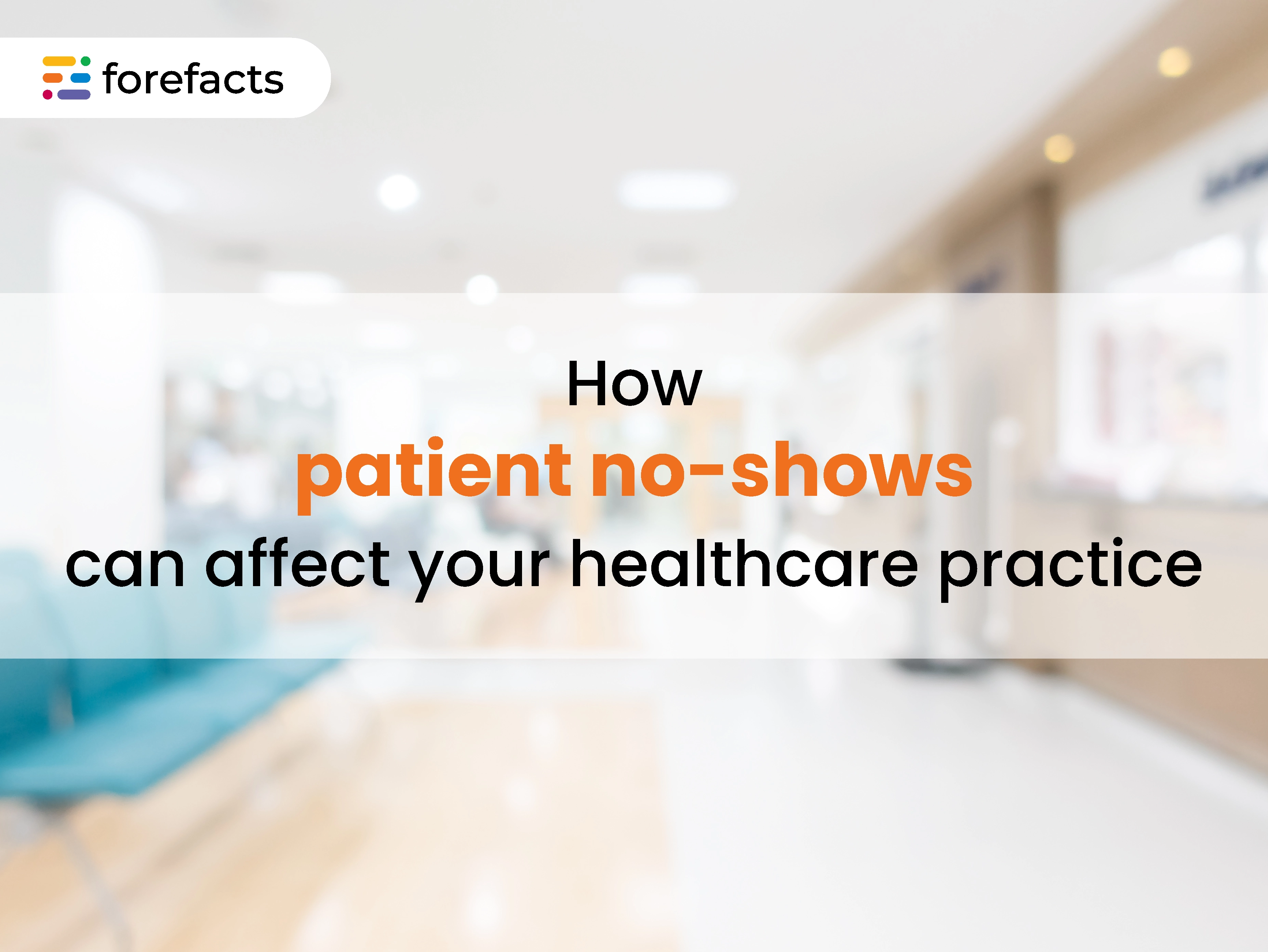Increase your web traffic with Bootbox.
Lorem ipsum dolor sit amet, cons rcquisc adipiscing elit.

Patient no-shows impact hospitals, health systems, and medical practices in many ways. Not only do no-shows cause vacancies in the schedule, but they also cause delays in diagnosis and treatment, administrative errors, and patient overcrowding. Despite dealing with patient no-shows frequently, healthcare practices struggle to identify the root cause and address the issue due to fragmented and incompetent systems in place. Healthcare practices employ various strategies to deal with this problem but are still struggling with patient no-shows and have resorted to resource-intensive processes that are manual, unscalable, and fail to deliver results.
Patients miss appointments for a variety of reasons. The top 6 reasons for them not to show up are:
Cost: Although the uninsured population rate has fallen, the increased cost of various health coverage and out-of-pocket expenses has skyrocketed. It is not uncommon for patients who fear they cannot afford their medical bills to avoid appointments because they feel embarrassed to discuss the financial burden.
Commuting issues: Many of your patients commute a great distance to see you. A number of them use public transportation. The absence of transport may result in your patients missing appointments sometimes.
Forgetfulness: forgetfulness is one of the top reasons many patients miss their appointments. Every day patients have a lot on their plate, and as a result, they forget their appointments.
Appointment time: Patients often accept inconvenient appointments simply because they have no other choices and miss them as their schedules can't align with the appointment times.
Fear: Many patients experience anxiety before visiting their providers. These fears and anxieties are overlooked by clinical staff who deal with medical interactions every day.
Patients don't believe it's necessary: Patients often reconsider having appointments, especially as the appointment date gets closer. Since they lack information about their health, they choose not to attend the appointment.
Patients who do not show up for their appointments lead to increased healthcare costs and underutilization of resources, disrupt a doctor's schedule, and they negatively affect patient care. Even though these factors seem trivial, they eventually end up jeopardizing the clinical and administrative workflows. When patients do not show up for their appointments, it leads to delays in diagnosis and treatment. An undiagnosed patient's chronic condition may worsen dramatically if he or she is not treated on time and will often require more costly emergency care in the future. It may lead to higher healthcare costs for the general population and result in patient bottlenecks at your practice.
The no-show rate affects hospitals, health systems, and medical groups equally. Organizations that don't see no-shows as a cause of concern miss out on opportunities to increase revenue generation.
Our fully-integrated practice management system automates appointment booking and notifies patients about their appointments through personalized communication channels to help healthcare organizations reduce their patient no-show rate.
 20
20Lorem ipsum dolor sit amet, cons rcquisc adipiscing elit.
 24
24Lorem ipsum dolor sit amet, cons rcquisc adipiscing elit.
 10
10Lorem ipsum dolor sit amet, cons rcquisc adipiscing elit.